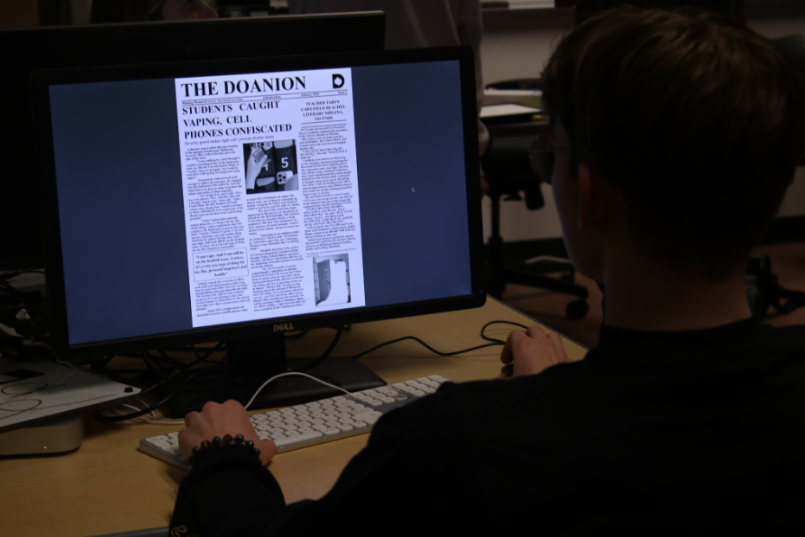Nine Misconceptions about Climate Change
The biggest mistakes people are making about a worldwide issue
- Global Warming or Climate Change?
The reason it was referred to as global warming in the past is because we found that the increase in greenhouse gases such as CO2 and methane cause the global temperature to rise due to the greenhouse effect. Thus, global warming was born. However, as our understanding of the issue grew, scientists found that the warming of the planet will cause more water to be evaporated, which means more moisture in the air. If there is more moisture in the air, that means more fluctuations in weather. The term climate change refers to an increase in extreme storms, temperature fluctuations, ocean acidification and more which is a more formal term.
- Antarctic sea ice is actually growing, not decreasing
Yes, in fact this is true, but what does this really mean? If the sea ice is expanding, that does not mean temperatures are getting colder. What this does indicate however, is that land ice is in fact melting and falling into the ocean. This then creates the scattering of ice across the ocean surface which is much less dense than if it was on the land. Through this process the sea ice is expanding, but the land ice is decreasing significantly. Sadly, Antarctica isn’t actually just an enormous floating ice cube, it is also a land mass. And in fact, Antarctic temperatures have been rising, as seen from satellite imaging.
- The sun is responsible for the warming.
Observing the overall data trend, there is no complete relationship between the global temperature and solar activity. In fact, the sun’s temperature has been decreasing over the past 25 years while global temperatures have been increasing. If we were to judge the Earth’s climate entirely based on the sun’s data, the Earth would actually be cooling instead of warming.
- Humans only release a small fraction of the total CO2.
This is also true, humans only emit about 30 gigatons of CO2 compared to the natural 780 gigatons from the surrounding environment. However, before human activity the Earth was in balance with this emission cycle. The land and ocean would emit this amount of CO2, but also absorb the same amount through the natural cycle of life. It’s this 30 gigatons that is affecting the environment the most because the Earth is not yet in balance with the new emissions. And it is not an easy task to balance this out either. This balance kept the CO2 ppm around 180-280 ppm for 800 thousand years. Now, the ppm is over 400 and rising.
- “How do you know it’s man made CO2?”
The answer is quite simple. The isotope carbon-13 is far less common in fossil fuels than it is naturally in the atmosphere. And because of this we are finding the concentration of this isotope is decreasing in the atmosphere.
More info can be found here.
- The Earth is not warming.
Many accusations such as number five, come from a multitude of mixed information. For example, many refer to this graph when looking at global rise in temperature. It is attemtping to show that the Earth’s temperature has not change for a great deal of time, being “updated” every month. However, it is outdated and does not account for the new satellite imaging of global temperatures. Let alone it’s implying global temperatures haven’t changed at all in the past eighteen years. And besides, that’s not how you draw a trend line. If you actually include the satellite data, the trend is obviously continuing upwards.Thirteen out of fourteen of the hottest years have occurred in this century. It is quite clear the the global temperatures are rising despite whether it is man made or not.
More info can be found here.
- “The predictions were wrong.”
Most refer to the graph made in 1988 to support this claim. The 1988 graph was made during the period in which we suspected climate sensitivity to be much higher compared to what we know now. If we rerun the model with 3 degrees of warming for every doubling of CO2, the data matches almost perfectly. And these numbers are not being made up as seen by the studies of Prof. Reto Knutti
- “Because big companies like Monsanto are supporting Climate Change, it’s a giant conspiracy.”
Well you have to logically think about this one. There is no conspiracy here, and they are rightful in supporting climate research. Companies like Monsanto are concerned with this issue because it will indeed cause them to lose profits and ability to operate. Monsanto is dependent on farm land, and with the climate changing as it is, it’s going to be much harder for them to use their already existing land. As of now, humanity farms on about 11 percent of dry land, by 2050 we will be farming on only 9 percent. That’s a loss of 111 million acres of farmland. This isn’t just affecting the big bad wolf either, this is affecting many organic farmers as well. So yes, it’s no wonder they are funding research on the issue because it is indeed harmful to their profits. Conspiracy theories should not be used as a scapegoat from the ills of the world.
- “There is no relationship between CO2 and temperature.”
This is, by pure factuality, a false claim. Carbon Dioxide works as a greenhouse gas by absorbing the UV radiation and thus becoming heat. This heat is radiated throughout the atmosphere which results in the overall warming of the atmosphere. In fact, this doesn’t just occur with carbon dioxide in our atmosphere, but it occurs with water, methane, nitrous oxide and many more gases. The greenhouse effect has been being used to make more sustainable farms and prolonged growth seasons for farmers.






























